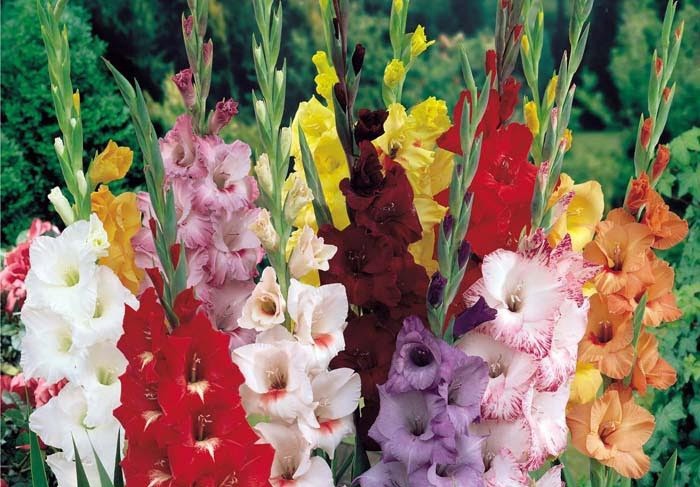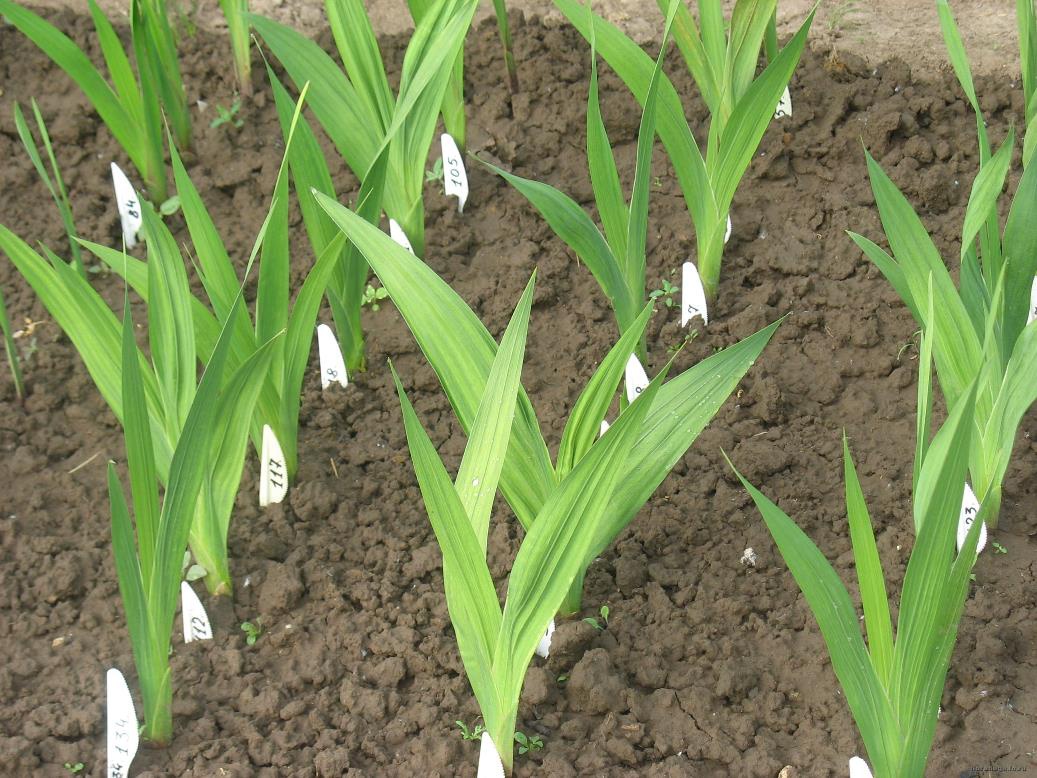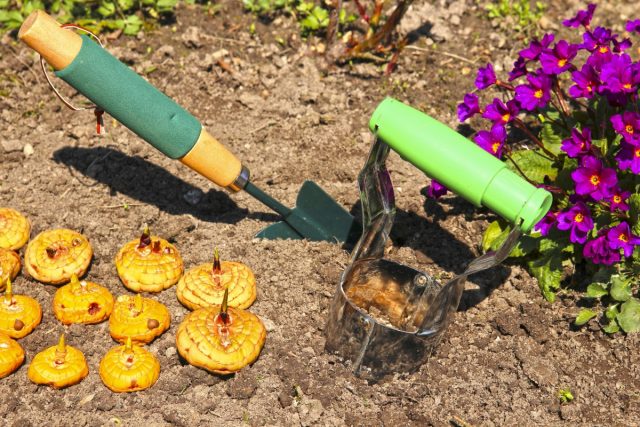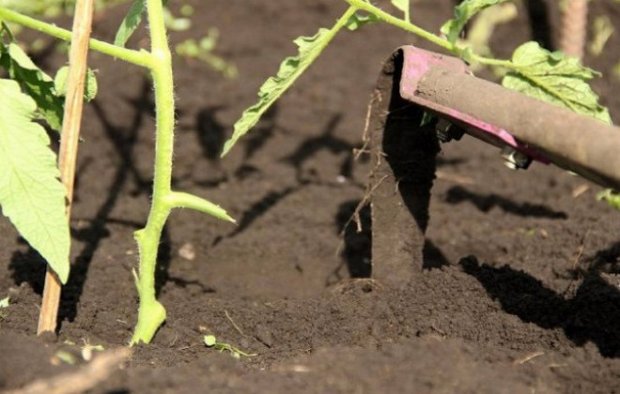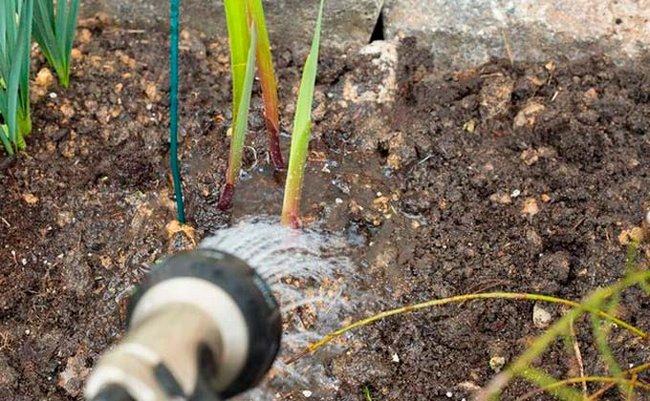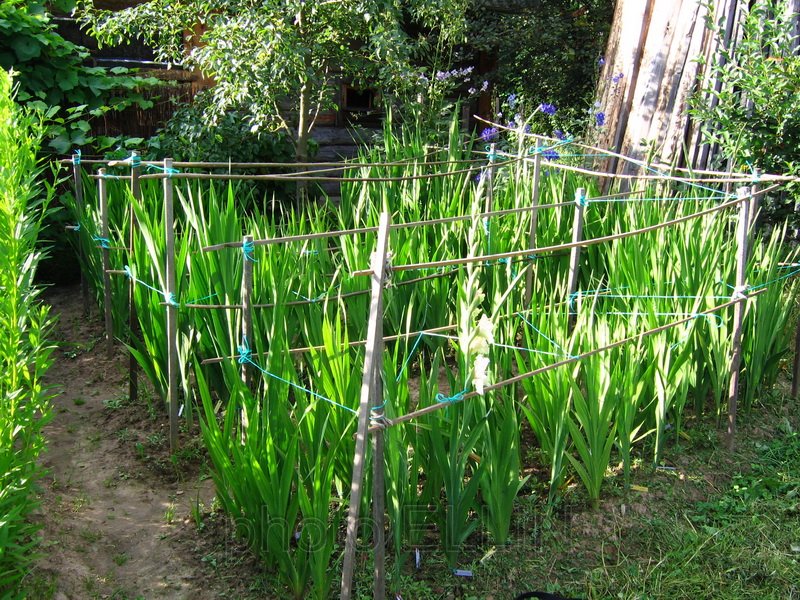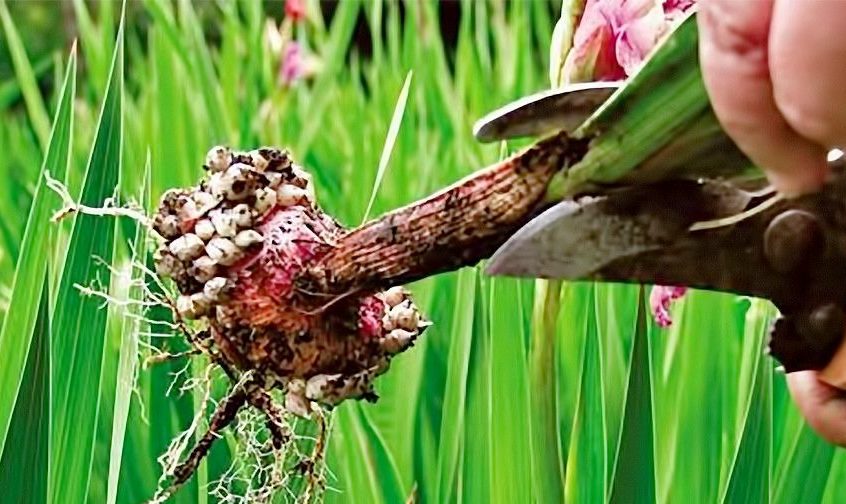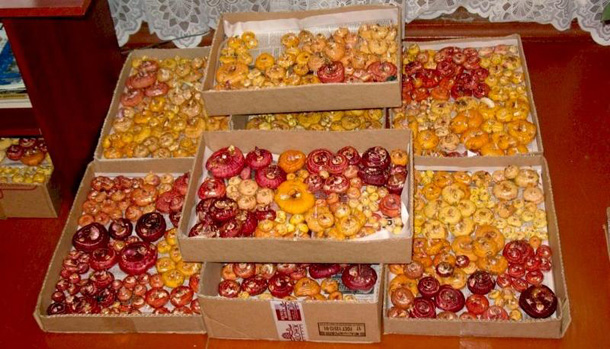Content:
Gladiolus, also known as skewer, is one of the most common flowering plants in the gardens of Russian agronomists. And this is not surprising, because an incredible colorful picture is formed during flowering.
Due to the demand today, there are more than 5000 varieties of the species. The life span of most perennials does not exceed 10 years, the plants are unpretentious in care, but they have their own characteristics. So for novice flower lovers it is still better to figure out how to care for gladioli correctly.
Gladioli care: general information
Many flower lovers, especially beginners, wonder how to care for gladioli in the garden and in the country. To do this, you need to familiarize yourself with the basic rules, without which it will be almost impossible to achieve lush and long flowering.
What do gladioli love? Growing features:
- You cannot grow gladioli in one place for more than two years. On the eve of the beginning of the third growing season, the plant must be transferred to a new place. Every florist must understand that the key to the lush flowering of healthy crops is compliance with the rules of crop rotation.
- When transplanting a culture, preference should be given to a place with a different soil composition. For example, if gladioli for the previous two years grew on light alumina, then in the third year they can be transplanted into sandy loam soil.
- It is important to acquire the correct varieties of gladioli. It is necessary to ensure that the variety is adapted to grow in the given climatic and weather conditions. When purchasing planting material from Holland, you should understand that gladioli will delight you with lush flowering only once.
- Do not plant adult bulbs and immature children nearby, otherwise the first ones will strangle the small ones. It is recommended to use the scheme: from small to large or vice versa. It is recommended to plant the largest bulbs separately.
- It is important to maintain the required planting depth. When planting in light soil, the depth should be equal to the diameters of four such bulbs, and in heavy soil, three diameters. If the depth is more than the prescribed norm, the plant may not bloom at all. If the depth is less, it will be necessary to tie up the arrow.
- When preparing for planting, it is necessary to clear the scales of the daughter bulb in a few days, otherwise it simply may not germinate. After planting, it is important to water the crop, in moderation, every other day.
- All varietal varieties of gladioli are light-loving plants, therefore, in conditions of partial shade or shade, they may not bloom at all. Only early varieties can grow in partial shade conditions, but you won't have to wait for early flowering.
- To prevent the development of fungal diseases, flowering plants must grow in an area with good ventilation.
- When growing gladioli, feeding is of great importance. If, for example, gladioli grow on infertile soils, mineral fertilizers should be applied to the soil regularly.
- In summer, you can water the plant at intervals of a week, but abundantly flooding the near-stem circle. If there is a sultry drought on the street, it is worth watering the plant a little every evening. After each watering, the soil is loosened, spud and weeds are removed.
- Of great importance in the cultivation of perennial gladioli is the harvesting of corms in the fall and their storage throughout the winter.
- The most suitable soil for the growth of gladioli is ordinary black earth, a mixture of loam and sandy loam with neutral or weak acidity.
Taking care of gladioli after planting in the open field
Newly planted gladioli need careful maintenance. When the height of the seedlings reaches about 10 cm, the area must be carefully mulched with rotted humus 5 cm thick. Thanks to this procedure, it will be possible to protect the soil from dehydration and overheating.
As for loosening, this procedure should be carried out at least once a week, regardless of the presence and amount of precipitation. As soon as buds begin to actively form on the arrows released, the peduncles must be tied to the support (pegs).
An integral part of the care of gladioli in open soil is weeding. The optimal frequency of the procedure is 3-4 times during the entire growing season. It is worthwhile to carefully monitor that there is no weed on the site, which is capable of strangling immature seedlings without much effort. In addition, in overgrown areas, the likelihood of developing fungal and infectious diseases increases significantly.
Feeding with organic and mineral fertilizers is of great importance in the cultivation of flowering plants. Feeding with mineral complexes should be carried out at different stages of culture development.
- The first fertilizer should contain nitrogen. The procedure is performed during the formation of full 2-3 sheets. If the culture is deficient in nitrogen, then the leaves of the plant turn pale, the excess contributes to the fact that the color of the green mass is excessively saturated, flowering slows down, and the resistance to fungal diseases decreases.
- The time for the second feeding is suitable when full-fledged 5-6 leaves are formed. It is recommended to apply complex potash-nitrogen-phosphorus fertilizers.
- The third top dressing is applied before the budding process, at this time the plant needs potassium and phosphorus.
Mineral fertilizers alone are not enough for the full development of a plant; they also need organic matter. It is recommended to introduce them in liquid form. Thanks to this, the active ingredients penetrate the root system. At the initial stage of development, it is recommended to use an infusion of bird droppings. It is recommended to carry out such fertilizing at intervals of 2-3 weeks, but after mid-August, fertilizers should not be introduced.
Gladioli are prone to diseases, therefore, in order to prevent their development, it is important to observe not only crop rotation, but also regularly irrigate plants with special chemical compositions.
How to cut correctly
Many agronomists ask questions, is it necessary to cut the flowers of gladioli and how to properly cut gladioli so that the head matures. Now more about this.
The best time to cut the plant is early morning or evening. This is due to the fact that at this time the peduncle is hidden among the remaining green mass. After cutting, at least 4 large and healthy leaves should remain on the bush, which will ensure the further growth and development of the corm.
How to tie gladioli
How to tie up gladioli so that they don't fall? There are many ways you can tie gladioli to prevent them from falling. The most practical and simplest way is presented below.
Gladioli are usually planted in rows (small bulbs - large bulbs). At the beginning and end of each row, you need to dig in a strong peg, the height of each must be at least 1 m.
Next, the twine is cut. Its length should be equal to the length of the row + an additional 20 cm. The end of the twine should be tied on one peg and then walk to the second peg, moving like a snake. Having walked around once, it is worth returning in the same way, following the snake's route. It turns out 8 or infinity signs, in which gladioli stand. In this case, you do not need to additionally tie flowers.
The twine is carefully pulled and secured. If the plants reach a great height, then the twine sometimes has to be lifted. Making such a garter with your own hands at home is not difficult.
How to water gladioli
Gladioli do not need frequent watering, optimally at weekly intervals. But in drought conditions, watering should be done much more often to avoid overheating. Water the plant closer to the roots, avoiding moisture on the stem, flowers and leaves.
Is it possible to transplant gladioli during growth
It is possible to transplant gladioli during growth, but this idea is not the most successful. The likelihood that the plants will take root is not so high, in addition, you will have to try very hard for this. If the grower wants to transfer the plants in the growth phase to the greenhouse due to unfavorable climatic conditions, then it is more expedient to install arcs on the rows and cover them with agrofibre.
When to dig up gladioli
An autumn digging of gladioli is required. As a rule, it is carried out in the second or third decade of September, after 35-40 days after flowering. The bulbs, ready for digging, are covered with thick integumentary scales. It is necessary to dig the plant in dry weather. Start with early varieties first, and then gradually get to the later ones. The latter need to dig up children and small bulbs.
Shortly before digging, you can mow the stems or trim them with pruners. The root system should also be pruned.
Next, the earth should be shaken off, and the children should be carefully separated. Corms should be placed in boxes with a mesh bottom. All varieties must be kept separate from each other.
Before storage, they must be disinfected by immersing them in a weak solution of manganese or Fundazol for half an hour. After that, you need to thoroughly rinse the tubers under running water and lay them in one row on a flat surface for drying. As a rule, it takes 3-5 days to dry, then they are transferred to containers where paper lies at the bottom. The optimal temperature regime for storing planting material is + 25-30 degrees.
After a month, the tubers can be peeled and sorted. Dirty scales are removed from their surface.
What to do with the kids? First of all, they are sorted by grade and size. The large baby is the one that has reached 0.8 cm in diameter, the average one is approximately 0.6 cm. Then the children are placed in paper bags and stored at a temperature not higher than +6 degrees. It is strongly discouraged to store at temperatures above, otherwise germination may be lost. In the apartment, children can be stored in the refrigerator, in the section designed for storing fruits and vegetables.
How to store gladioli in winter
Gladioli remain in natural dormancy for no more than 40 days a year.During this time, the bulb will not germinate under any circumstances, even if the growing conditions are ideal. After this time, the chances of germination increase significantly.
Often a problem is associated with this - the planting material begins to germinate at the wrong time. What to do if it is winter outside? Create optimal conditions for storing tubers - the temperature is not higher than + 5-10 degrees, the humidity level is approximately 60-70%. Bulbs must be inspected at least once a month, spoiled ones must be disposed of immediately.
For storing gladioli in winter, it is recommended to use wooden boxes with a mesh bottom, where perfect ventilation is provided. The ideal place is a cold cellar or basement. It is not recommended to put boxes on the floor; it is better to give preference to storage on shelves. An alternative option is to store the bulbs in bags made from oversized pantyhose.
When storing bulbs in the refrigerator, place them in a hermetically sealed container. Otherwise, the planting material can simply dehydrate and dry out. Each head must be wrapped in paper. The time to get them out of the refrigerator comes closer to spring, as the tubers begin to "breathe" and release excess moisture.
Gladioli are attractive but picky flowering plants. The abundance of varieties allows you to create incredible flower arrangements in flower beds, you just have to give free rein to your imagination. In order for desires to justify reality, it is necessary to first familiarize yourself with the agrotechnical rules and characteristics of the cultivated variety - it must be adapted for cultivation in a given climatic zone.
